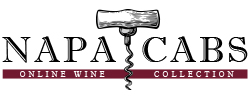Essential Wine Guide: Top Tips for Selecting, Tasting, and Enjoying Your Bottle
Picking the right wine can be a sensory quest as rich as the flavors in your glass. Navigate the landscape of varietals, vineyards, and vintages with our Essential Wine Guide. Designed for both budding enthusiasts and practiced palates, this guide offers practical tips for enhancing your wine selection, tasting techniques, and pairing prowess. Embark on a path to deepen your appreciation and skillfully choose your next bottle of wine.
Key Takeaways
- Wine has a rich history, with advancements in production over the centuries leading to a vast diversity of styles today, influenced by factors such as grape varieties, yeast strains, and modern winemaking techniques.
- Proper wine-tasting engages multiple senses and involves understanding the role of glassware, decoding complex aromas, and identifying key flavor characteristics to appreciate the nuance of each wine.
- Food and wine pairing is an art that enhances the dining experience, while the concept of terroir, serving techniques, and wine storage are essential for preserving and serving wine at its best.
Discovering the Wine World: A Beginner's Roadmap
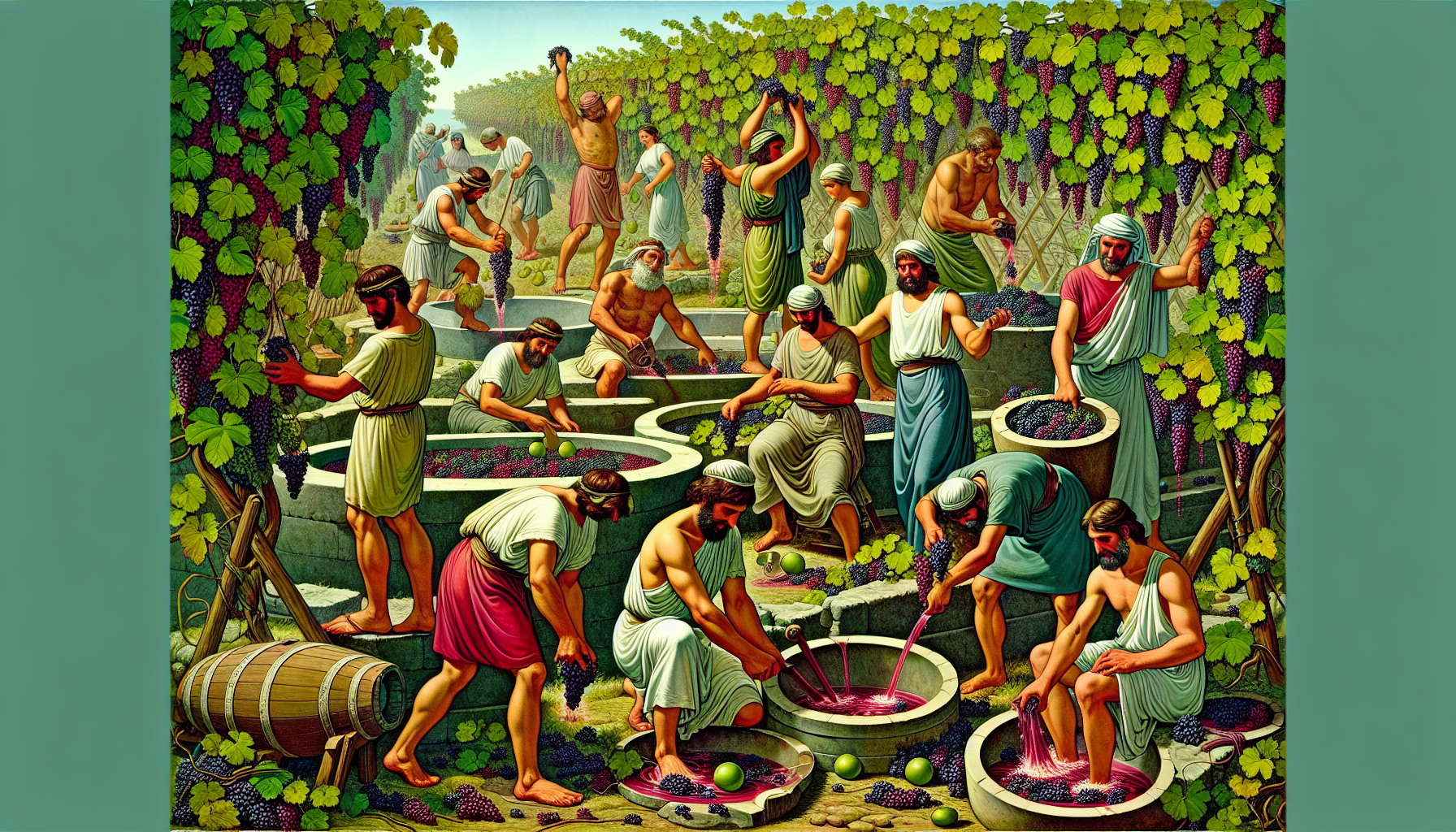
Wine, a beloved beverage since time immemorial, has roots embedded deeply in the cradle of human civilization. As early as 6000 BC, areas like present-day Georgia and Persia witnessed the cultivation of wine, celebrated in ancient Greece as a symbol of social influence and artistic inspiration. The Roman Empire’s expansion further propagated viticulture, laying the foundation for many of today’s major wine-producing regions.
The Middle Ages saw wine becoming a dietary staple, with monasteries playing a pivotal role in vine cultivation and the establishment of renowned wine territories. However, the 17th and 18th centuries marked a turning point in wine production. The advent of glass bottles and corks ushered in a new era for wine quality and storage. Despite challenges like the Phylloxera aphid in the 19th century, the wine industry thrived through adaptations such as grafting techniques, resulting in a vast diversity of European wines.
Today, modern winemaking is a fusion of art and science. Recent advancements, including refrigeration for fermentation control and machine harvesting, have significantly enhanced production efficiency. With a multitude of wine styles attributed to different grape varieties and yeast strains, each contributes unique characteristics to the finished product.
Our exploration of the wine world now brings us to the immersive art of wine-tasting, an integral part of wine culture.
The Art of Wine-Tasting: Engage Your Senses
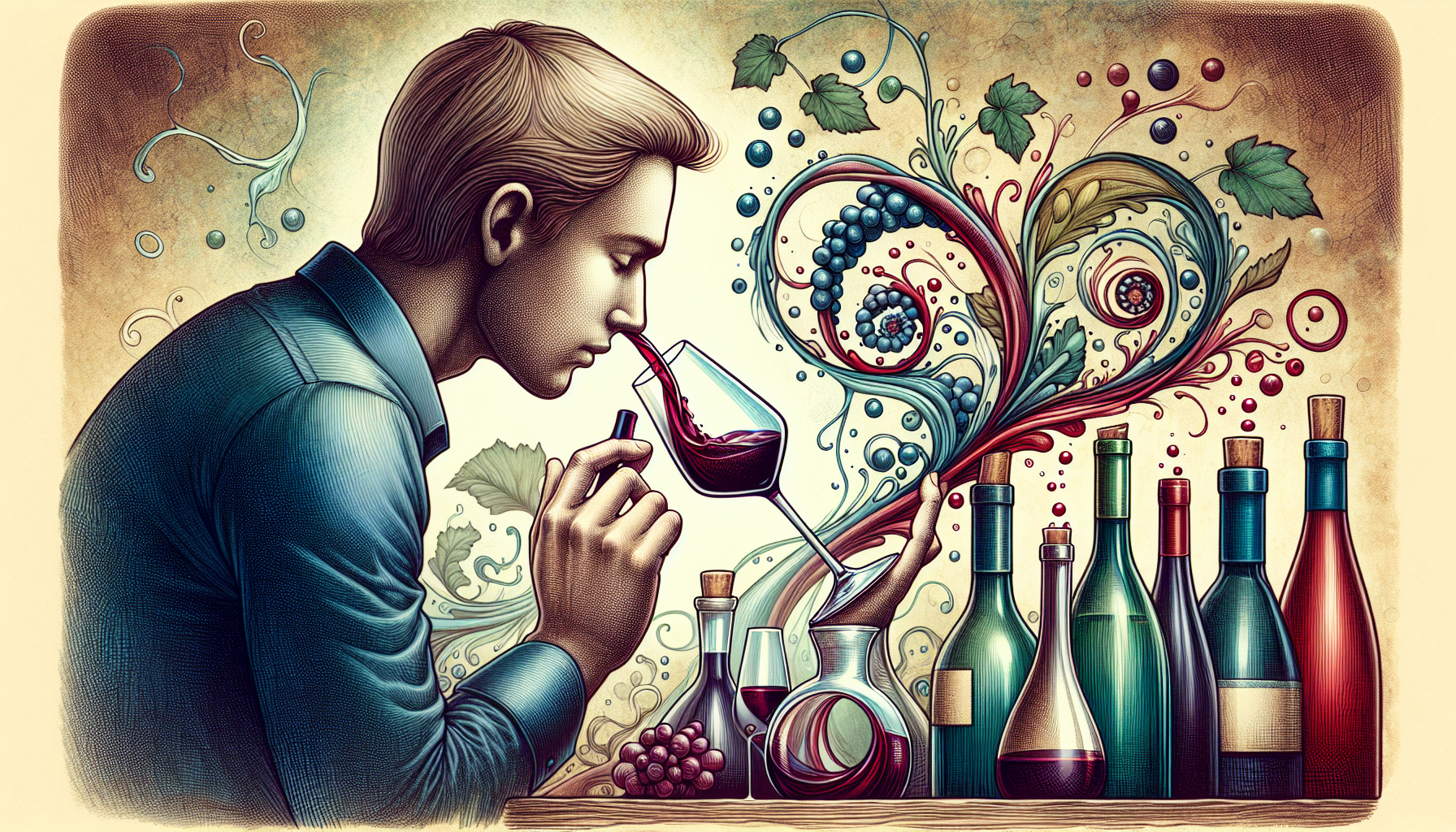
The art of wine-tasting is a sensory experience, engaging sight, smell, and taste in an intricate ballet. By examining the wine’s color and clarity, distinguishing aromas, and discerning flavors, texture, and various characteristics, one can truly appreciate the essence of a wine. A key step in this process is swirling the wine in the glass, which releases the wine’s aromas and enhances the overall wine-tasting experience.
We are now ready to explore the intricacies of this sensory journey, starting with the significant role of the wine glass.
The Right Glass Makes a Difference
The contours of a wine glass can significantly enhance your wine-tasting experience. The shape affects the intensity and distribution of wine aromas, making the tasting experience more enjoyable. For instance, the shape and design of a wine glass can influence the perception of aromas and flavors in the wine, allowing for a more comprehensive appreciation of each sip.
Consider Pinot Noir, a lighter-bodied red wine with high acidity and soft tannins. It features red fruit flavors and often vegetal notes, which can be particularly influenced by the glass shape. Using the right glass can, therefore, elevate the wine-tasting experience, bringing to the fore the subtle notes and complex flavors of the wine.
While sipping and savoring wine, our olfactory senses get activated. Next, we’ll unravel the intriguing world of wine aromas.
Decoding the Aromas
Wine aromas form a complex blend of molecules produced during grape ripening, fermentation, and aging. The following aromatic compounds give wine its distinct floral, fruity, and spicy scents:
- Monoterpenes
- Methoxypyrazines
- Sesquiterpenes
- Varietal thiols
A wine flavor wheel can guide you to pinpoint and articulate the myriad aromas present in different wines.
The aroma spectrum of a wine can include a diverse range of fruits and floral notes. For instance, you can detect the characteristics imparted by oak aging, such as vanilla and butterscotch in some Chardonnays. As you become more proficient in identifying these scents, you’ll find that understanding the flavor profiles of different wines becomes more intuitive.
Understanding Flavor Profiles
A wine’s flavor profile is defined by five main characteristics:
- Sweetness
- Acidity
- Tannin
- Alcohol
- Body
Understanding these elements is crucial to assessing a wine when tasting. The structure of a wine, including sweetness, acidity, tannin presence, body, and flavor, plays an essential role in the tasting experience.
Mastering the art of wine tasting requires the identification of these characteristics and understanding their interplay to create a unique flavor profile. Our exploration continues as we discover the harmony between food and wine and how apt pairings can enhance a dining experience.
Perfect Pairings: Food and Wine Harmony
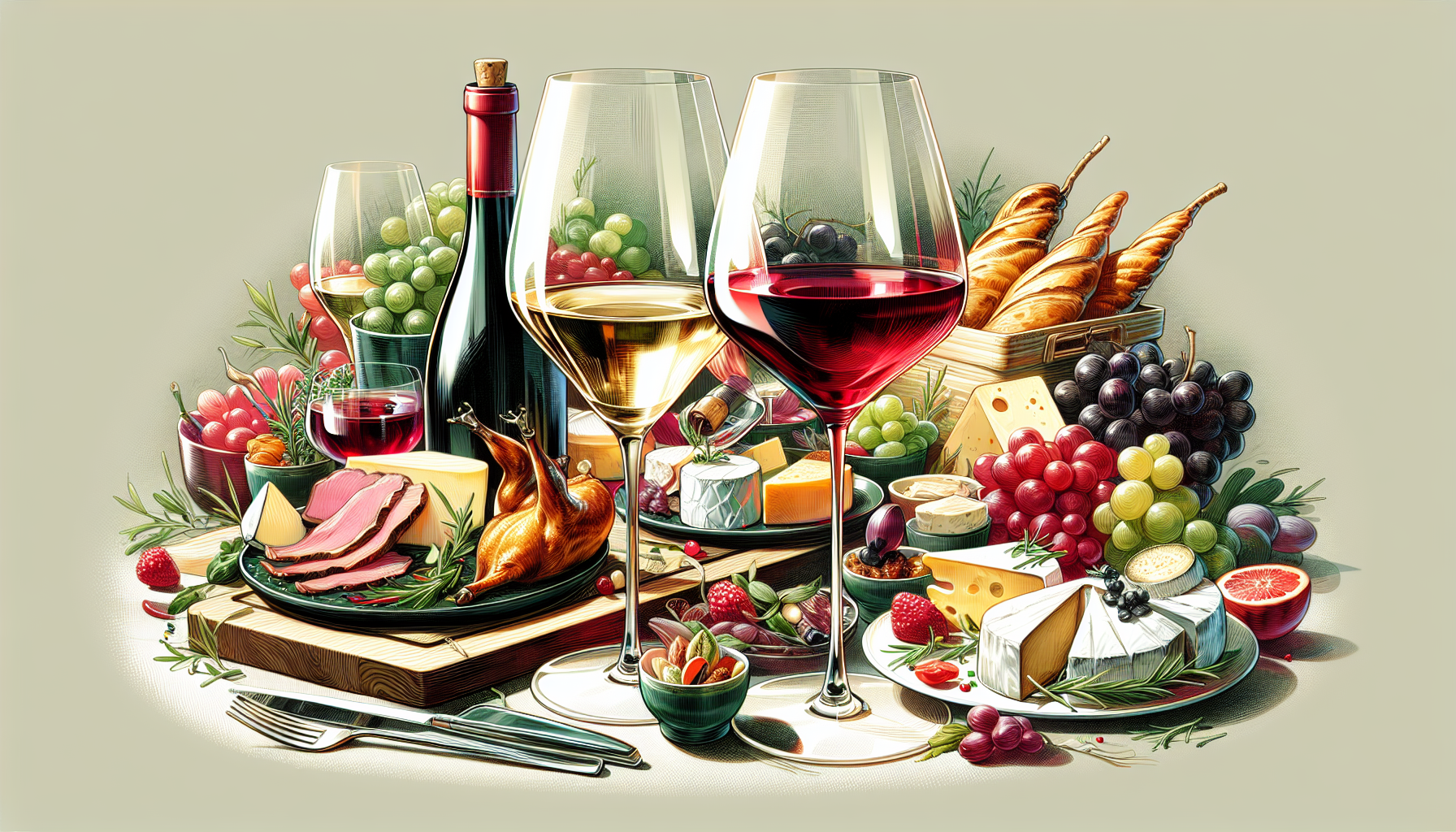
When you think of a sumptuous dinner, a glass of wine often comes to mind. The art of pairing food with wine is about creating harmonious combinations that enhance the dining experience. When done correctly, the wine’s flavors can complement the food, and vice versa, creating a symphony of taste.
Consider a robust Cabernet Sauvignon paired with a juicy steak. The high tannins in the wine balance out the rich, fatty flavors of the meat, creating a harmonious blend that is greater than the sum of its parts. This is one of the classic wine pairings that showcases how the right combination can elevate the dining experience. On the other hand, a delicate white wine like Pinot Grigio might be overshadowed by the bold flavors of the steak.
Having a strong grasp of wine and food pairings can turn your meals into a celebration of flavors. However, the allure of wine extends further. Whether you're drinking wine or other alcoholic beverages, picking the perfect pairing is essential for the ultimate dining experience.
Next, we’ll explore the influential concept of terroir and how it shapes wines.
The Significance of Terroir: Same Vineyard, Different Vintages
If you’ve ever wondered why wines from the same vineyard taste different year after year, the answer lies in the terroir. Terroir encompasses the soil composition, climate, and microclimate, creating a unique fingerprint for each vineyard that influences grape growth and the wine’s character. Each vineyard plot’s specific environmental factors, such as variations in soil nutrients, lead to differences in grapes and wine flavor, even with the same grape variety.
Wines considered terroir-driven are expected to exhibit differences that trace back to the unique environmental conditions of the region or vineyard where the grapes were grown. The expression of terroir in wine is significantly influenced by the balance of nutrients in the soil, rather than their sheer concentration.
Understanding terroir helps us appreciate the uniqueness of each wine, akin to a fingerprint that tells a story of its origin.
Next, let’s uncover the art of serving wine like a pro.
Serving Wine Like a Pro: Temperature and Decanting

Although serving wine may seem simple, it is a nuanced process. Two essential factors – the wine’s temperature and the process of decanting – greatly impact the wine’s flavors and aromas, thus enhancing your tasting experience.
Next, we’ll dispel a common myth about serving red wines.
Red Wines at Room Temperature? Think Again
You might have heard that red wines should be served at room temperature. However, this idea is outdated, as current average room temperatures are higher than the ideal range for red wines. To achieve the proper temperature, red wines are best served between 55 to 65 degrees Fahrenheit to maintain their intended flavor profile. If red wine is served too warm, the taste of alcohol may overpower the flavor. On the contrary, too cold a temperature can accentuate the tannins.
Consider lighter red wines like Pinot Noir and Zinfandel, which are best served slightly chilled, between 53° to 59°F. Full-bodied red wines such as Cabernet Sauvignon, on the other hand, should be served warmer, at approximately 59° to 65°F. With the temperature sorted, it’s time to discuss the role of decanting.
The Role of Decanting
Decanting is an essential part of the wine serving process, particularly for older red wines. It involves separating the sediment from the liquid, ensuring a smoother and more enjoyable drinking experience. Besides sediment removal, decanting can aid in softening tannins in younger red wines and addressing potential off-aromas in older ones.
When a cork is compromised, decanting with the aid of a fine mesh strainer or cheesecloth helps to ensure no cork particles are transferred into the glass. Additionally, the process of decanting introduces oxygen to the wine, which not only improves the taste of younger wines but also encourages mature wines to release their full bouquet. For vintage ports that are less than 40 years old, allowing the bottle to stand upright before decanting helps sediment to settle. For those over 40 years old, an upright rest of about 30 minutes prior to decanting is recommended.
Equipped with a deeper understanding of serving wine, we are ready to explore the broad range of wine varietals, including Italian wines.
Exploring Varietals: From Cabernet Sauvignon to Sweet Wines
The world of wine varietals is as diverse as it is delightful. Each varietal offers a unique taste profile, telling a story of its origin, cultivation, and winemaking process. Let’s explore some popular ones.
Cabernet Sauvignon, for instance, is a full-bodied red wine known for its rich flavors of black cherry, black currant, baking spices, and cedar. The grape variety is naturally high in tannins, providing a robust structure to the wine. On the other hand, Syrah, or Shiraz, offers a full-bodied richness with intense fruit flavors, medium tannins, and a distinctive meaty profile. Zinfandel provides versatility with a medium-bodied experience and a palette ranging from stone to black fruits, enhanced with spice and sweet tobacco.
In the realm of white wines:
- Sauvignon Blanc offers a tart and lively character, with herbal green fruit flavors complemented by aggressive citrus notes.
- Pinot Gris, also known as Pinot Grigio, brings forward a light-bodied profile with subtle citrus and white floral notes, with a hint of bitterness.
- Riesling ranges from sweet to dry styles, delivering high acidity and a bouquet featuring citrus, stone-fruit, and sweet herbal elements.
Having explored some varietals, it’s time to learn how to store your favorite bottle.
Storage Essentials: Preserving Your Favorite Bottle
Storing wine correctly is essential to preserving its quality and enhancing its longevity. Several critical factors include temperature, light, and humidity. Here are some guidelines to follow:
- Wines should be stored at a temperature consistently below 70 degrees Fahrenheit, ideally around 55 degrees Fahrenheit, to avoid accelerated aging and to preserve their quality.
- Avoid using household refrigerators for long-term storage, as they can dry out corks and usually have temperatures colder than the ideal wine storage conditions.
- Keep wine away from direct sunlight or any other source of UV light, as it can cause premature aging and spoil the wine.
- Maintain a humidity level of around 70% to prevent the corks from drying out and allowing air to enter the bottle.
By following these guidelines, you can ensure that your wine is stored properly and will be enjoyed at its best.
Maintaining a consistent storage temperature without rapid or extreme fluctuations is crucial for wine preservation. Here are some tips for storing wine:
- Store wine away from direct light, especially UV rays, to prevent degradation and premature aging of the wine.
- Aim to maintain humidity levels in the storage area between 50 to 70 percent to minimize cork drying and limit mold growth.
- Positioning bottles horizontally is efficient for storing wines with traditional corks, as it keeps the cork moist and prevents it from drying out.
Beyond the Grape: The Craft of Winemaking
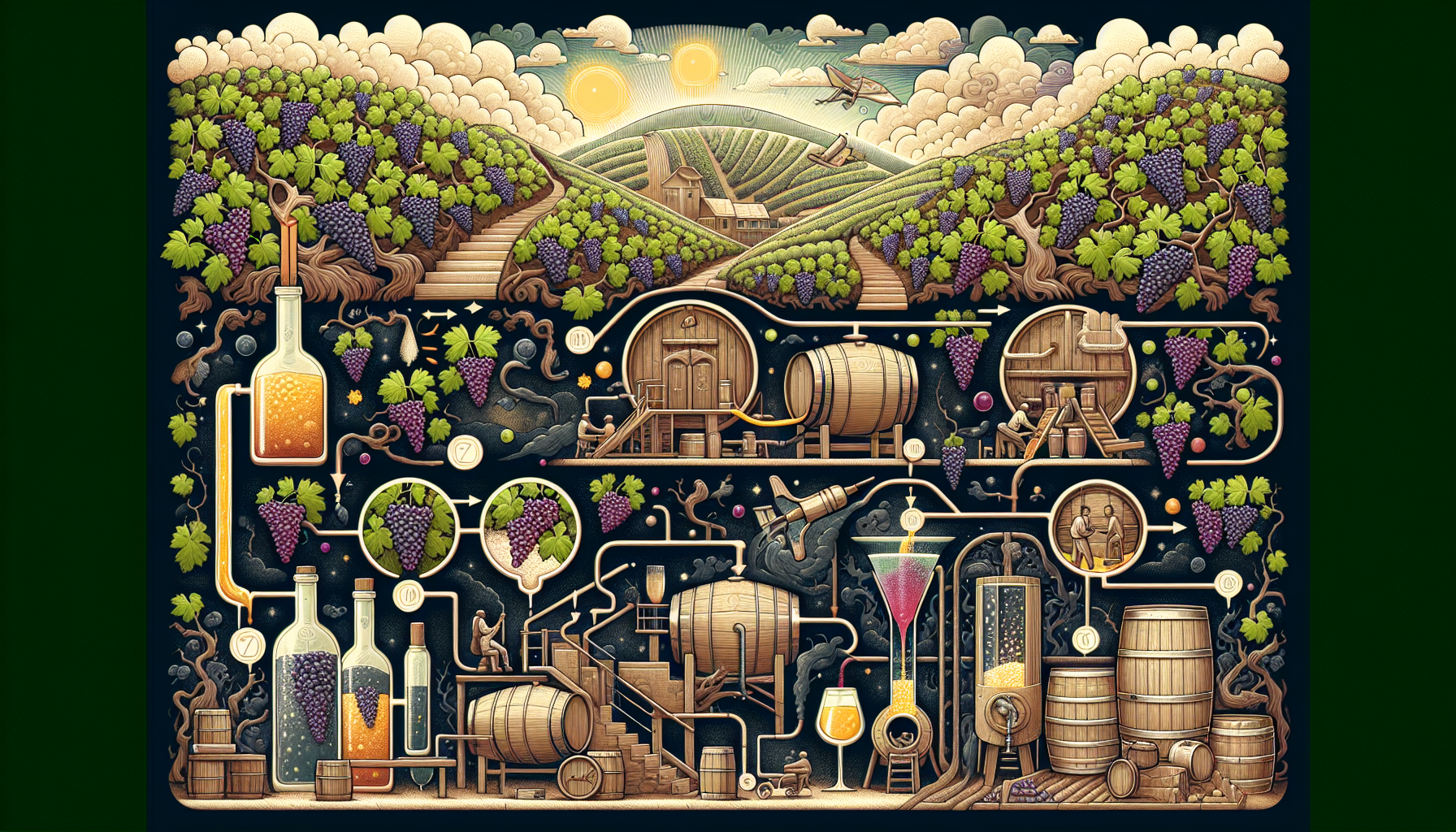
The craft of winemaking is an intricate process that goes beyond just fermenting grape juice. It starts with:
- Harvesting grapes at their peak ripeness, as done for Meiomi Pinot Noir. This ensures an optimal balance of acidity and sugars, which is critical for the wine’s flavor profile.
- Employing a cold soak process before fermentation can enhance the flavor and color of the wine, as demonstrated in the crafting of Meiomi Pinot Noir.
- The complexity of a wine like Meiomi Pinot Noir can be amplified by using a combination of native and cultured yeast strains during the fermentation process.
Tannins, found in the skin, seeds, and stems of grapes, play a crucial role in the preservation, development, and aging of wine by acting against oxygen’s effects and assisting in chemical reactions. Some key points to note about tannins in wine are:
- Tannins give wine structure and texture, contributing to its mouthfeel.
- They can create a drying sensation in the mouth, especially in young red wines.
- Tannins help wine age and develop complexity over time.
- Aging wine in oak barrels can soften the tannins and add flavors like vanilla and spice.
- Blending different barrels of wine is important to achieve a balanced and harmonious final product.
These factors, including the use of French oak barrels and the blending process, contribute to the creation of wines like Meiomi Pinot Noir.
The bottling process must be carried out with precision to maintain the freshness and character of the wine, which is the last critical stage before the wine reaches consumers. Sulfites, which occur naturally and can also be added by winemakers, have antioxidant and antimicrobial properties that contribute to the wine’s preservation, impacting the required amounts based on wine dryness, sweetness, and wine type regulations.
Having explored the craft of winemaking, let’s uncork a bottle of sparkling wine and enjoy drinking wine.
Sparkling Wine: Celebrating Life's Moments
Sparkling wine is synonymous with celebration. From popping the cork to the effervescent bubbles dancing in your glass, it adds a touch of magic to any occasion. Sparkling wine is typically crafted using one of six primary methods, resulting in different carbonation levels and styles.
The Traditional Method, also known as Méthode Champenoise, is used for Champagne and other high-quality sparkling wines. This method involves labor-intensive secondary fermentation in the bottle. The Tank Method, often employed for Prosecco, involves secondary fermentation in a large tank rather than individual bottles. This makes it more cost-effective and distinct from the Traditional Method.
The pressure within a sparkling wine bottle influences the bubble texture, with higher pressure resulting in finer effervescent qualities, noticeable in terms like ‘Beady’, ‘Semi-Sparkling’, and ‘Sparkling’. While we toast to life’s special moments, it’s worth exploring the potential of wine as an investment.
Investing in Fine Wine: Expensive Wines as Assets
Fine wine is not just an indulgence, but also an investment. The world of fine wine investments offers portfolio diversification with a low correlation to traditional asset classes such as stocks and bonds, proving advantageous during market fluctuations. Fine wine investments may also be negatively correlated with the stock market, offering potential protection and balance in an investment portfolio during economic downturns.
Benchmarks such as the Liv-ex Fine Wine 100 and Sotheby’s Wine Index have historically shown the outperformance of the fine wine market compared to traditional equity indices like the S&P 500. However, investing in wine incurs additional costs not typical of more liquid assets, including buyer’s premiums, shipping, proper storage, and insurance, impacting the investment’s net return. The secondary market plays a significant role for investors and collectors looking to purchase fine wines, which are commonly acquired via auction houses, exchanges, and wine brokers. Wine investment platforms offer investors the opportunity to create diversified wine portfolios. Some platforms provide additional services such as managed portfolios and wine trading platforms, making fine wine investment more accessible.
While enjoying our favorite bottle of investment-grade wine, let’s explore the world of sustainable winemaking practices.
The New Wave: Sustainable Practices in Wineries
Sustainability is more than just a catchphrase in the wine industry – it is a commitment to the future. Sustainable wineries focus on:
- Minimizing environmental impacts by reducing the use of chemical pesticides and fertilizers
- Promoting water conservation
- Energy efficiency
- Biodiversity
- Soil health
Biodynamic farming treats the vineyard as a self-sustaining ecosystem, emphasizing regenerative agriculture. Sustainable wineries may also utilize renewable energy sources and protect local wildlife.
The following certifications are awarded to wineries implementing specific sustainable practices:
- SIP
- CSWA
- LIVE Certified
- Napa Green
- USDA Organic
- Demeter Biodynamic
The ISO 14001 certification indicates an effective environmental management system in a winery. Sustainable winemaking practices can lead to wines that more purely reflect the unique characteristics of both the grape and its terroir.
As we conclude our journey through the vineyard, it’s time to recap the key points we’ve covered.
Summary
We’ve journeyed through the rich history of wine, engaged our senses in the art of tasting, discovered the harmony of food and wine pairings, explored the influence of terroir, and mastered the art of serving wine. We’ve also delved into the world of wine varietals, learned about proper storage, understood the health implications of wine consumption, and unraveled the intricacies of winemaking. We’ve celebrated life’s moments with sparkling wine, discovered the potential of wine investment, and embraced the sustainable practices in winemaking. As we raise our glasses, let’s toast to the world of wine – a world that is as diverse, complex, and fascinating as the drink itself.
Frequently Asked Questions
What is the ideal temperature for serving red wine?
The ideal temperature for serving red wine is between 55 to 65 degrees Fahrenheit, with lighter red wines like Pinot Noir and Zinfandel best served slightly chilled, and full-bodied red wines such as Cabernet Sauvignon served warmer. It's important to drink alcohol at the right temperature to have the best experience.
What are the main characteristics that define a wine's flavor profile?
A wine's flavor profile is defined by five main characteristics: sweetness, acidity, tannin, alcohol, and body, which together create its distinct taste.
How does the shape of a wine glass influence the tasting experience?
The shape of a wine glass can significantly affect the tasting experience by influencing the intensity and distribution of wine aromas, ultimately impacting the overall flavor perception.
Can wine be considered an investment?
Yes, wine can be considered an investment as it offers portfolio diversification and has a low correlation to traditional asset classes. However, it also comes with additional costs such as buyer's premiums, shipping, proper storage, and insurance.
What are sustainable practices in wineries?
Sustainable wineries focus on minimizing environmental impacts by reducing the use of chemical pesticides and fertilizers, promoting water conservation, energy efficiency, biodiversity, and soil health. They may also utilize renewable energy sources and protect local wildlife.
Recent Posts
-
All About White Sangria
Craving white sangria? Here are simple and delicious white sangria recipes that are perfect for any …Jul 19th 2024 -
Perfect Pairings: Elevate Your Meal with Long Shadows FEATHER Columbia Valley Cabernet Sauvignon 2019
When it comes to enjoying a fine bottle of wine, the right food pairing can make all the differen …Jul 17th 2024 -
Essential Wine Guide: Top Tips for Selecting, Tasting, and Enjoying Your Bottle
Picking the right wine can be a sensory quest as rich as the flavors in your glass. Navigate the lan …Apr 18th 2024
